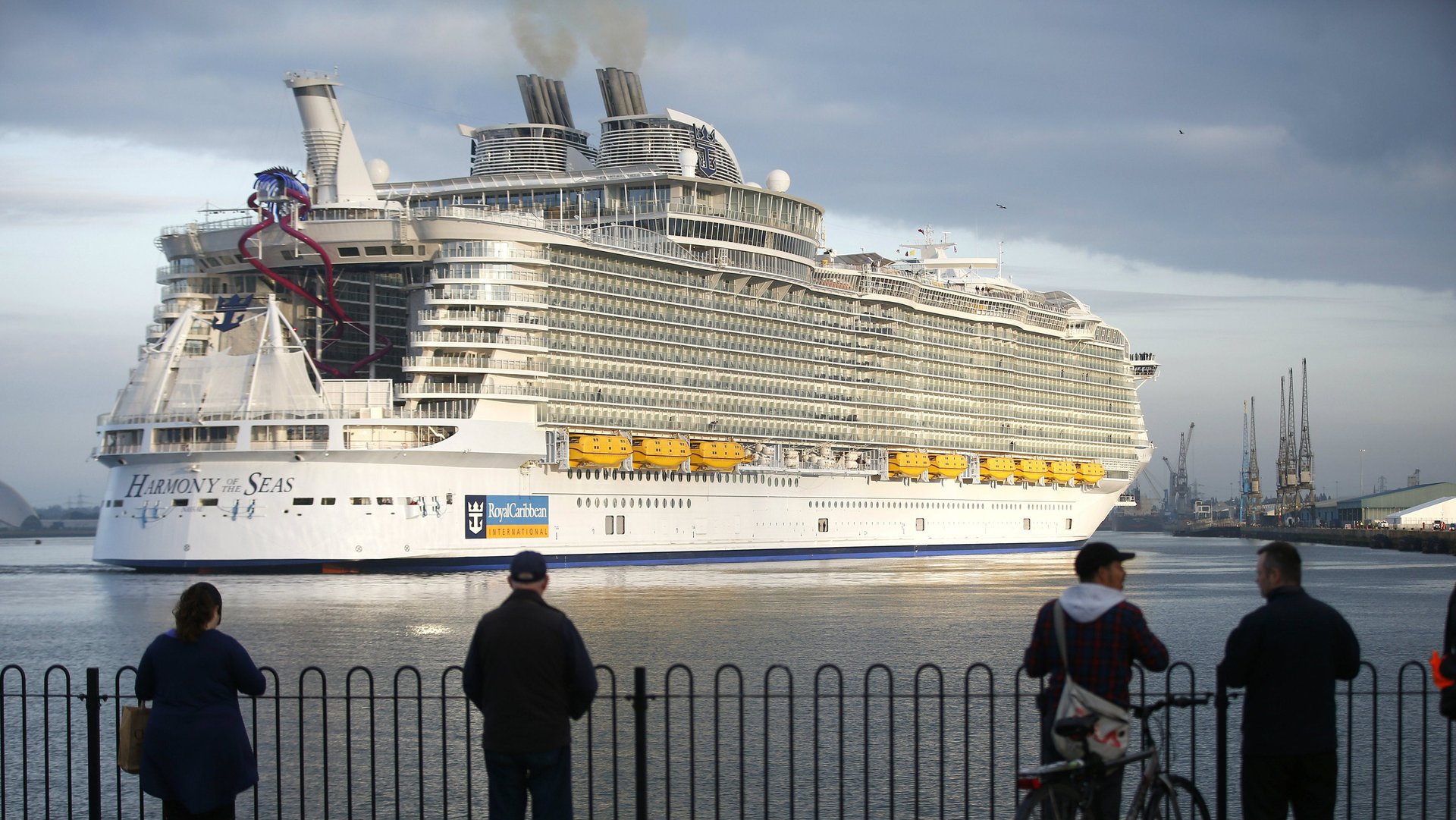The missing British cruise-ship entertainer is the fifth man overboard in five weeks
The US Coast Guard’s Atlantic Ocean search for British cruise-ship entertainer Arron Luke Hough was suspended yesterday (Dec. 27), two days after he was reported missing from Royal Caribbean’s Harmony of the Seas.


The US Coast Guard’s Atlantic Ocean search for British cruise-ship entertainer Arron Luke Hough was suspended yesterday (Dec. 27), two days after he was reported missing from Royal Caribbean’s Harmony of the Seas.
Footage from the vessel’s CCTV system revealed Hough entering an area on Deck 5 in the early hours of the morning, not to be seen again. The search was conducted 267 miles northwest of Aguadilla, Puerto Rico, according to the coast guard.
Hough was the fifth man overboard (MOB) incident to occur in just five weeks. On average, according to an industry report, such incidents happen 18 times per year, or one to two times per month. The Cruise Lines International Association—the industry’s trade and lobbying arm—says MOBs are always the result of “intentional or reckless” acts.
According to reports, Hough, 20, wasn’t reported missing until 10 hours after he reportedly went overboard, when he failed to show up to work. This lag time is not unusual. In four out of the five recent cases, the individual’s fall was not discovered until several hours later. On the whole, 17% to 25% of MOBs result in a rescue. Knowing the moment an individual goes overboard greatly increases the chances of rescue, according to maritime safety experts.
As Quartz reported Dec.17 after a six-month investigation into the problem, calls for the industry to install man-overboard detection technology are intensifying. The technology works by installing a network of sensors (including radar, infrared, and video) designed to detect when someone has fallen overboard. It then sends an automated alert to the crew, along with roughly 10 seconds of CCTV footage from the triggered location. The bridge can then use this footage to determine if a search-and-rescue mission is needed, or if it was a false alarm triggered by, say, a seagull or wave.
Legislation passed in the US in 2010 was intended to require this technology on ships that embark or disembark from American ports. However, a wording change allowed just having CCTV installed—not automatic detection as well—to put cruise lines in compliance.
The cruise industry, including Royal Caribbean, insists that this automatic-detection technology is not reliable enough to warrant installation. Royal Caribbean CEO Richard Fain told Quartz earlier this year that “Like many areas of technology, the promise is often better than the actuality today.” Systems from at least one manufacturer, MARSS MOBtronic, are in use on several vessels—including mega yachts, one cruise ship and another in development, soon-to-be New Zealand Royal Navy ships.
After Hough’s disappearance was discovered, according to a company statement, a ship-wide search was conducted and the incident was reported to authorities. Harmony of the Seas, which was sailing out of its home port of Fort Lauderdale, Florida, continued on its seven-day Caribbean itinerary.